Landscaping Cloth Weed Control

Table of Contents
Landscaping Cloth: Your Ultimate Guide to Weed Control
Landscaping cloth, also known as landscape fabric, weed barrier fabric, or weed mat, is a popular choice for gardeners and landscapers seeking effective weed control. This comprehensive guide explores the benefits, types, installation, and potential drawbacks of using landscaping cloth to create a weed-free haven in your garden or landscape.
What is Landscaping Cloth and How Does it Work?
Landscaping cloth is a permeable fabric designed to suppress weed growth while allowing water and air to reach the plants you want to cultivate. It works by blocking sunlight, the essential ingredient for weed germination and growth. This physical barrier prevents weeds from establishing themselves, saving you time, effort, and the frustration of constant weeding.
Key Benefits of Using Landscaping Cloth:
- Effective Weed Suppression: This is the primary advantage. It significantly reduces weed growth, minimizing the need for herbicides and manual weeding.
- Water Conservation: By reducing evaporation, landscaping cloth helps conserve water, especially beneficial in dry climates.
- Soil Improvement: It can help retain soil moisture and improve soil structure over time, creating a healthier environment for your plants.
- Reduced Erosion: In sloped areas, it helps prevent soil erosion.
- Longer-lasting Results: Compared to mulch alone, landscaping cloth provides longer-term weed control.
Types of Landscaping Cloth: Finding the Right Fit
Several types of landscaping cloth exist, each with its own characteristics and lifespan:
1. Woven Landscape Fabric:
- Pros: Durable, strong, and long-lasting (can last 5-10 years or more). Good for heavier applications and areas with aggressive weeds.
- Cons: Can be more expensive than non-woven options. Less permeable than non-woven fabrics.
2. Non-Woven Landscape Fabric:
- Pros: More permeable than woven fabric, allowing for better water and air penetration. Generally more affordable.
- Cons: Typically has a shorter lifespan (2-5 years) than woven fabric. May not be as effective against particularly aggressive weeds.
3. Biodegradable Landscape Fabric:
- Pros: Environmentally friendly option that decomposes over time, reducing waste.
- Cons: Shorter lifespan than other options, requiring replacement sooner. May not be as effective at weed suppression in the long term.
How to Install Landscaping Cloth for Optimal Weed Control
Proper installation is crucial for maximizing the effectiveness of landscaping cloth. Follow these steps for best results:
- Prepare the Area: Clear the area of existing weeds, removing them completely, including roots. Till the soil to loosen it and level the surface.
- Lay the Fabric: Unroll the landscaping cloth, overlapping edges by at least 12 inches to prevent weeds from growing through the seams. Cut around existing plants to allow for growth.
- Secure the Fabric: Use landscape staples or pins to secure the fabric to the ground, particularly in windy areas.
- Add Mulch: Applying a layer of mulch (wood chips, gravel, or other materials) on top of the fabric helps hold it in place, improves aesthetics, and provides additional weed suppression. Avoid using heavy rocks or materials which can pierce the fabric.
- Plant Your Plants: Cut ‘X’ shaped holes in the fabric for planting your chosen plants and ensure the roots have adequate space to grow.
Potential Drawbacks of Using Landscaping Cloth
While landscaping cloth offers many benefits, it's essential to be aware of some potential drawbacks:
- Potential for Moisture Build-up: If not installed correctly, it can trap too much moisture, potentially leading to root rot or other plant diseases.
- Difficult to Remove: Once installed, it can be challenging to remove, requiring significant effort to extract.
- Environmental Concerns: Some non-biodegradable fabrics can persist in the environment for many years.
- Cost: While the initial cost might be higher than other weed control methods, it provides long-term value.
Choosing the Right Landscaping Cloth for Your Needs
The best type of landscaping cloth depends on your specific needs and budget. Consider the following factors:
- Weed Pressure: For aggressive weeds, a durable woven fabric is recommended.
- Budget: Non-woven fabrics are more affordable but may need replacing sooner.
- Environmental Concerns: Biodegradable options offer an eco-friendly alternative.
- Climate: In wetter climates, ensure good drainage by choosing a more permeable fabric.
By carefully considering these factors and following the installation instructions, you can effectively use landscaping cloth to achieve long-term weed control and a thriving landscape. Remember to always prioritize sustainable practices and responsible disposal of materials when necessary.

Thank you for visiting our website wich cover about Landscaping Cloth Weed Control. We hope the information provided has been useful to you. Feel free to contact us if you have any questions or need further assistance. See you next time and dont miss to bookmark.
Featured Posts
-
Trendy Closet Indian Clothing
Dec 04, 2024
-
Wall Mounted Closet Systems
Dec 04, 2024
-
Scottish Artist Wins Turner Prize
Dec 04, 2024
-
Us Rugby Star Maher Bristols High Hopes
Dec 04, 2024
-
32 Inch Outdoor Ceiling Fans
Dec 04, 2024